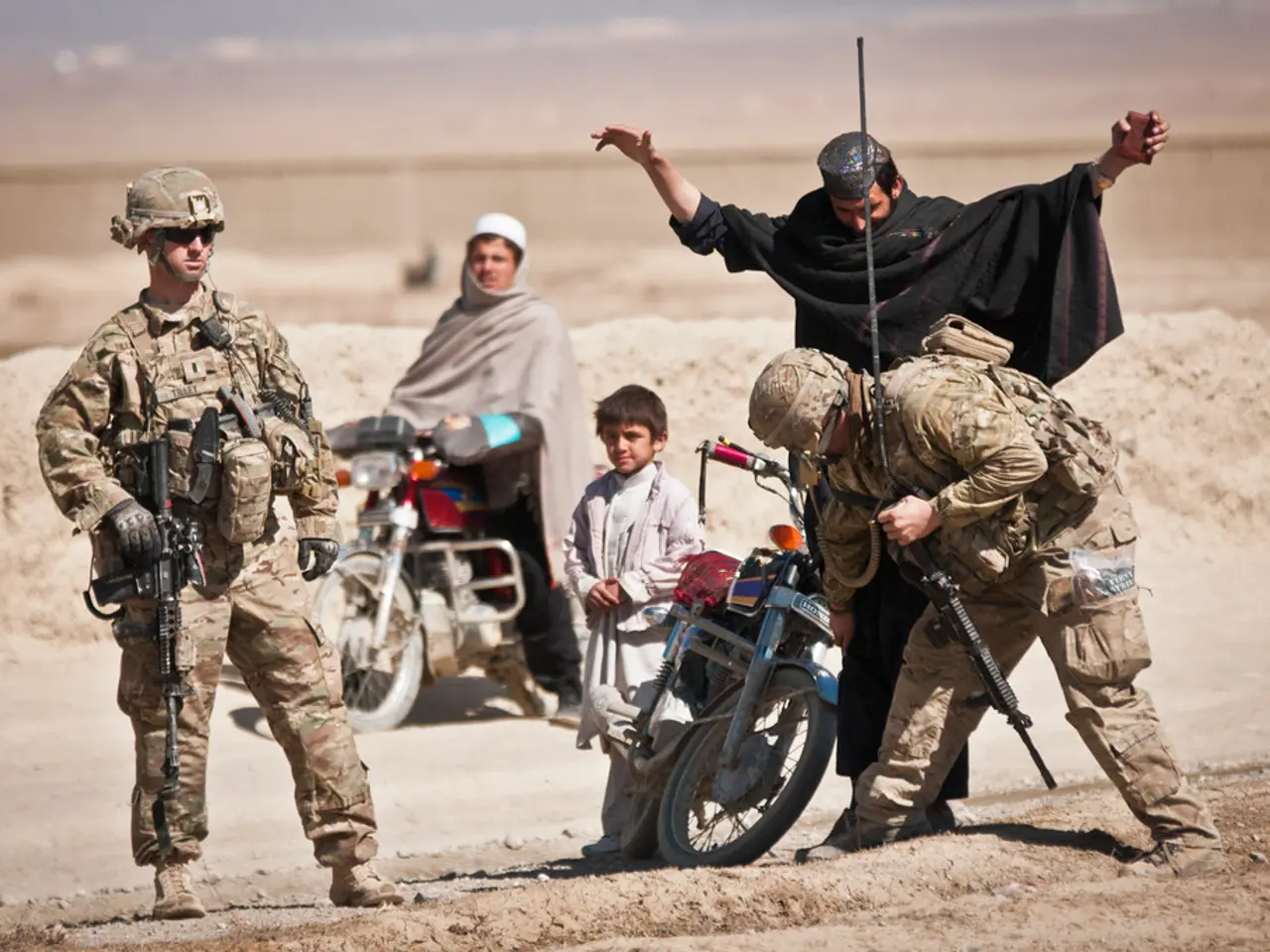8:00 AM: Four individualsperish due to Russian artillery and air strikes
In the ongoing conflict between Ukraine and Russia, both sides continue to make advances and face challenges. According to recent reports, Russian forces have gained approximately 226 square miles of Ukrainian territory between July 8 and August 5, with military advances reported in various regions including Kharkiv Oblast, Kupyansk, and Zaporizhia oblasts [1]. Ukrainian forces, however, have also made gains near Chasiv Yar, maintaining resistance despite the pressure from Russian troops [1].
The daily missile and drone attacks on both sides persist, contributing to ongoing casualties and humanitarian concerns. This persistent hostility along multiple sections of the frontline continues to cause concern [2].
Diplomatically, there is some movement towards potential negotiations. Ukrainian President Volodymyr Zelenskyy has signaled his willingness for direct talks with Russian President Vladimir Putin [1]. Former U.S. President Donald Trump has also expressed interest in facilitating peace efforts, possibly including meetings involving Zelenskyy and Putin in the coming weeks [1][2]. However, concrete results from recent high-level meetings have been unclear [1].
Internationally, the U.S. continues to support Ukraine militarily. The U.S. State Department recently approved a $104 million military sale to Ukraine, reflecting ongoing Western assistance [1]. Despite this, Ukrainian public support for continuing the war until victory has declined significantly. A majority (69%) now favor a negotiated peace as soon as possible, a reversal from earlier in the conflict when most supported fighting on [2].
Meanwhile, Russia has faced criticism from various international bodies over its oil imports from India and its withdrawal from the disarmament agreement on the elimination of land-based nuclear short- and medium-range missiles [3]. The Russian Foreign Ministry has declared a moratorium over these agreements, claiming that Russia has continued to adhere to them even after the U.S. withdrawal in 2019 [3].
The situation is developing such that U.S.-made land-based nuclear short- and medium-range missiles are being stationed in Europe [4]. This development has not been without controversy, with the German army raising concerns over the potential deployment of U.S. missiles in Germany, fearing German cities could be at risk [5].
In other developments, Brigadier General Christoph Huber of the German Armed Forces aims to make the troops stationed in Lithuania into a deployable brigade within two years [6]. Russian President Vladimir Putin had threatened to respond "mirror-like" to the planned deployment of U.S. missiles in Germany in 2026 [7].
The conflict has also seen its share of damage to infrastructure. A report suggests a Russian nuclear submarine support base in Kamchatka may have been damaged following a strong earthquake [8]. The Ryazan refinery of Russian state corporation Rosneft is currently only partially operational after Ukrainian drone attacks [9].
Ukrainians are skeptical about the diplomatic effort led by Steve Witkoff, a special envoy sent by U.S. President Donald Trump to Russia [10]. Meanwhile, Russia seems displeased with U.S. Vice President JD Vance, calling him "dumb" [11].
As the conflict continues, both sides face challenges and uncertainties. The ongoing fighting, territorial changes, and daily missile and drone attacks demonstrate the intensity of the conflict. The diplomatic efforts offer a glimmer of hope for a resolution, but the concrete results remain unclear. The international community continues to watch closely, offering support and criticism as the situation unfolds.
- The international community, including the United States, is providing military support to Ukraine, but the ongoing war and territorial changes have led to a decline in public support for continued fighting among Ukrainians.
- As the conflict between Ukraine and Russia persists, both sides face criticism from international bodies, with Russia facing scrutiny over its oil imports and withdrawal from disarmament agreements, and the U.S. facing backlash over the potential deployment of land-based nuclear missiles in Europe.






